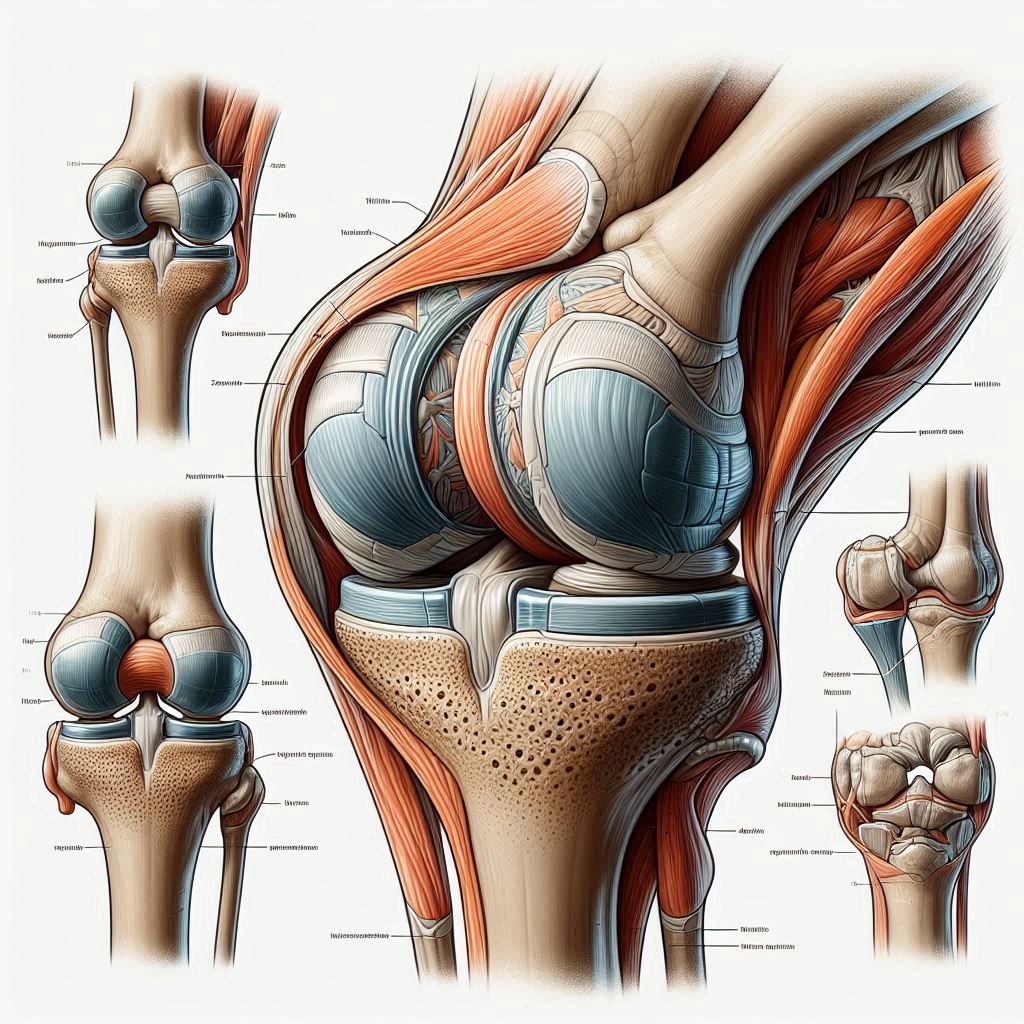Introduction
Dealing with a torn meniscus can be a huge pain – literally and figuratively. This important piece of cartilage in your knee can make or break your daily mobility. While surgery is often recommended, there is a growing interest in natural treatment methods. If you are wondering how to heal a torn meniscus naturally, you are in the right place. Let’s go into detail about what you can do to get back on your feet without surgery.
Understanding the Meniscus

Located within the knee joint, the medial and lateral menisci are C-shaped pieces of cartilage that provide cushioning and stability between the femur and tibia. Each knee has two meniscus – one on the outside edge (lateral) and one on the inner edge (medial). These structures help stabilize your knee, absorb shock, and distribute weight.
Common causes of a torn meniscus
The meniscus often tears due to activities that involve bending or twisting your knee, especially when your foot is on the ground. Common causes include:
- Sports injuries
- Sudden twisting or turning
- Lifting heavy weights
- Age-related wear and tear
Symptoms of a torn meniscus
How do you know if your meniscus has torn? Here are some signs:
- Pain and swelling: Initial pain is followed by swelling for a few days.
- Limited motion: Difficulty moving the knee fully.
- Locking sensation: Feeling like your knee is stuck in one position.
Diagnosis
If you think you have a torn meniscus, it is important to get a proper diagnosis.
Physical examination
The doctor will perform a variety of tests to assess your knee’s range of motion and diagnose the pain.
Imaging tests
MRI scans are the best way to diagnose a meniscus tear, providing a clear picture of the cartilage.
Initial steps to take
Once diagnosed, the first steps are important to set the stage for natural healing.
Rest and protection
Avoid activities that put stress on your knee. Give it time to heal by taking a break from high-impact exercises.
Ice application
For reduced swelling and pain relief, apply ice packs. Aim for 20-minute sessions several times a day.
Compression techniques
Wear an elastic bandage or knee brace for support and reduced swelling.
Elevation
Elevate your leg to reduce swelling, especially while resting.
Natural treatment methods
Physical therapy
Physical therapy can help you regain strength and mobility in your knee. A physical therapist will guide you through exercises tailored to your recovery.
Strengthening exercises
Focus on exercises that strengthen the muscles around your knee, such as:
- Leg presses
- Hamstring curls
- Quadriceps sets
Flexibility Exercises
Incorporate stretching exercises to maintain flexibility in your knee joint. Yoga may be particularly beneficial.
Nutrition for healing

Anti-inflammatory foods
Eating a diet rich in anti-inflammatory foods may help with recovery. Include:
Fatty fish (such as salmon)
- Leafy greens
- Berries
- Nuts and seeds
Supplements to consider
Certain supplements may also aid healing:
- Glucosamine and chondroitin: Known to promote cartilage health.
- Omega-3 fatty acids: Found in fish oil, help reduce inflammation.
- Vitamins C and E: Aid in tissue repair and act as antioxidants.
Herbal remedies

Turmeric
Turmeric contains curcumin, a powerful anti-inflammatory compound. You can take it as a supplement or add it to your meals.
Ginger
Ginger is another natural anti-inflammatory that can be consumed as a tea or added to food.
Boswellia
Also known as Indian frankincense, boswellia helps reduce inflammation and pain.
Lifestyle changes
Weight management
Maintaining a healthy weight reduces stress on your knees. Even small amounts of weight loss can bring about significant health improvements.
Avoid high-impact activities
Stay away from activities that put a lot of pressure on your knees. Choose low-impact exercises, such as swimming or cycling.
Holistic approach
Acupuncture
Acupuncture can help reduce pain and improve knee function by stimulating specific points on the body.
Chiropractic care
Chiropractors can provide adjustments that improve knee alignment and function.
Yoga
Yoga increases flexibility, strength, and balance, which are important for knee health. Poses such as Warrior II and Bridge may be particularly helpful.
The Importance of Patience and Consistency
A torn meniscus takes time to heal naturally. It’s essential to be patient and stay consistent with your recovery plan.
Realistic Expectations
Understand that natural healing may be slower than surgical options. Start by setting realistic goals, then actively track your progress to stay motivated.
Maintaining a Routine
Stick to your exercise and nutrition plan. Consistency is key to seeing improvements.
When to Seek Professional Help
While natural treatment is effective for many people, there are times when you should consult a professional.
Signs of Complications
If you experience increased pain, swelling, or instability, it’s time to see a doctor.
Considering Surgical Options
In some cases, surgery may be necessary. Consult an orthopedic specialist to discuss your options.
Preventing Future Injuries
Proper Warm-Up Techniques
Always warm up before engaging in physical activities. This prepares your muscles and joints for the stress of exercise.
Protective Gear
Using knee pads or braces can provide additional support and prevent re-injury.
Success Stories
Hearing from people who have successfully healed a torn meniscus naturally can be incredibly motivating. Many have found relief with a combination of physiotherapy, proper nutrition, and holistic exercises.
Conclusion
Healing a torn meniscus naturally is possible with the right approach. By combining physiotherapy, proper nutrition, herbal remedies, and lifestyle changes, you can support your body’s healing process. Stay patient and consistent, and remember that professional help is always available if needed. With dedication and care, you can get back to your active lifestyle without surgery.
FAQs
What is the natural healing timeline for a meniscal tear?
Healing times vary, but with consistent care many people see improvement within 6-12 weeks.
Can a torn meniscus heal without surgery?
Yes, especially for minor tears. Rest, physiotherapy and proper nutrition can promote healing.
What exercises are best for meniscus recovery?
Strengthening exercises such as leg presses and hamstring curls, as well as flexibility exercises such as yoga, are beneficial.
Are there any risks with natural treatment methods?
Natural methods are generally safe as long as you follow a structured plan and consult professionals as needed. Avoid activities that aggravate pain or cause further injury.
How can I prevent re-injuring my meniscus?
Maintain a healthy weight, avoid high-impact activities, warm up properly and use protective gear as needed.



